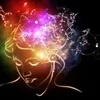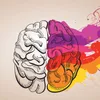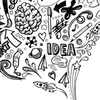The art of noticing: how careful observation can make you more creative, insightful, and happy
This compelling new book offers an array of techniques and exercises to sharpen and deepen your curiosity. The activities are useful for entrepreneurs, artists, and business professionals.
In an age of increasing digital distraction, people have become so busy or preoccupied that they are unable to have immersive experiences or be in the present, and have thus lost much of the capacity to see, listen, think, and act clearly.

But it is the power of curiosity and observation that can lead to better art and inventions, and to greater joy and bliss, as explained in the book The Art of Noticing: 131 Ways to Spark Creativity, Find Inspiration, and Discover Joy in the Everyday, by Rob Walker.
Hailed as a “sensory upgrade” and a “delightful field guide to being alive,” the book is packed with activities, questions, insights and humour. The book is a great read from cover to cover, or in random sampling.
Rob Walker is the author of Buying In and Significant Objects, and on the faculty of the Products of Design MFA program at the School of Visual Arts in New York. He is also a columnist for The Atlantic, New Yorker and Bloomberg Businessweek.
Becoming a better, deeper and more original observer of the world and of oneself improves the creative process, Rob begins. This applies to a broad range of professions and pursuits, including scientists, entrepreneurs, artists, social activists, and business professionals.
The five sections are spread across 240 well-designed pages, along with references to other books like Ways of Seeing, Predictably Irrational, The Artist’s Way, See for Yourself, How to See, Deep Listening, Explore Everything, Urban Smellscapes, Mindfulness, Zen Mind, Everything We Touch, and You May Also Like.
As diverse examples of people known for insightful observations, Rob points to Warren Buffet (investor), Jerry Seinfeld (comedian), Laurie Anderson (artist), Rachel Carson (biologist), and Billy Beane (baseball coach). Mindfulness training is on the rise in organisations around the world, as the value of poly consciousness and original perspectives is being prized.
Being distracted is part of human evolution, but being able to focus is important as well. Productivity needs to be balanced with exploration, and the spirit of curiosity applies in both directions. Reawakening our sense of creativity and wonder can lead to inspiration and insights, Rob advises.
Here are my key takeaways from this compelling book. See also my reviews of the related titles Quirky, Messy, InGenius, A Beautiful Constraint, Seeing What Others Don’t, How to get to Creative Ideas, The Creative Curve, and The Art of Creative Thinking.
The 131 exercises are divided into five categories of activity: looking, sensing, travel, connections, and being alone. They are physical activities but can also serve as thought experiments. Rob divides them into four types: easy, doable, enjoyably challenging, and advanced. “These ideas are meant to shake up the way you see, hear, notice, and otherwise experience the world,” he explains.
Being observant has some built-in trade-offs and balances – it can mean escaping a moment or being in it; it can mean blocking all distractions or choosing one of them. These aspects of observation are systematically and humorously brought out in the book.
1. Looking
Activities to practise better observation include conducting a scavenger hunt (eg. security cameras, payphones, plaques, upcycled objects), spotting something new everyday on your regular commute, observing which colours jump out at you during a walk, and collecting images and photographs systematically (For example, shapes, textures, manhole covers).
Other recommended activities are spotting numbers, stargazing, focusing on a single object (for 10 minutes and even three hours), looking up (not just down or ahead), zooming in or out, looking out of ignored windows, identifying newest/oldest things around you, and framing or captioning what you see.
Rob also adds other unusual observation exercises in museums: look at flaws, guards, names of donors, behaviours of other visitors, and envision how random objects could become art. Another exercise is to draw objects instead of photographing them – this can bring out new details and perceptions.
Putting on different hats and functions can lead to interesting observations, for example, finding a plot connecting objects, viewing scenes like a historian or a futurist (or even a child or an improv performer).
Looking at what other people have abandoned can open up new kinds of insights and stories as well. Labels by the Fair Trade Network draw our attention to buried details such as working conditions of garment labourers.
Such techniques improve your perception of the unusual and the mundane, and ability to detect patterns. “Art is everywhere, if you say so,” Rob explains. “You’ll see details you missed, you’ll draw new connections, and you’ll reconsider first impressions,” he adds.
2. Sensing
Activities with regard to hearing include monitoring your own “sonic profile,” make an inventory or map of sounds you hear, listening to sound components (for example, an instrument or description), connecting sounds to the feelings induced, recording audio snapshots and discussing them, and deep listening.
This can extend to other senses as well, such as an audit or map of tastes and smells, a scent walk, imagining spirits in what you see, or putting together random objects in interesting ways.
Examples of art that draw on these principles include John Cage’s music composition 4’33” which consists of pure silence, and may even come across as a cultural prank. Marina Abramovic has designed performance art formats where attendees silently view one another or walk slowly across a room with intense concentration.
Rob describes an activity called ‘digital silence,’ where you observe others’ posts for a period of time but do not respond. He also asks us to wonder what we would post if we were allowed only a few updates a month, and to only a few people per week. This could increase our power of appreciation and focus.
Humans may actually have dozens of senses, Rob explains. These include detecting temperature differences, balance, pain, time, and even hunger. They can also remind us of specific instances or memories, and bring out a range of connotations and identities.
3. Going places
Walking with a neighbourhood expert or a companion can bring out new objects, significances and connections along the way, Rob advises. Walking or drifting through unfamiliar parts of town, randomising your movements, and seeing how tourists view your own town are other revealing activities. Meeting faraway friends at geographic midpoints can open up new places to explore.
Stores can also become playgrounds; children are adept at devising games out of seemingly routine environments, Rob observes. An interesting activity is describing scenes or objects without using metaphors; this distinguishes between engagement and interpretation.
Other suggested exercises are eating in off-beat places, keeping a nature log or field guide about everyday objects, testing your memory of observation, making one-minute videos about and from different locations, and adding annotations to historical places or plaques on public objects that memorialise incidents.
Re-reading a travel diary after some years is another interesting activity. “Consider the difference between the immediate experience and what sticks in your mind later. Consider how this affects what you choose to try to remember now,” Rob suggests.
4. Connecting with others
Rob explains that some of the above activities reveal new insights when conducted with others, such as nature walks where you observe together, or when you walk together silently and only later share observations. “Walk and talk” meetings with colleagues or during conferences can open up new kinds of energy and conversations.
Seeking out strangers and talking to them may involve some discomfort in the beginning, but can open up new worlds of perception and opinion. This can improve your sense of empathy, and even inspire you. Another related exercise is writing a letter to a stranger, hero, or villain.
Other useful activities are interviewing friends and elders, or asking relatives and colleagues to interview you about incidents and stories revolving around happiness, pride, humour, loneliness or grief. In the workplace, asking five questions, requesting five suggestions, or giving five compliments a week can make you more alert and aware.
Rob also suggests filling out imaginary dialogue in conversations overheard when people are talking on the phone (‘halfalogue’), or imagining what passersby are thinking about. Volunteering time for social activities brings out feelings like accomplishment.
Spotting problems and complaining about them helps open the door to solutions and fixes, something which entrepreneurs excel at. “That which bothers you might just make your day,” Rob explains.
5. Being alone
Interesting activities to follow here include eating or sitting alone in a crowded place (without looking at books or phones), being observant during boring activities like waiting in line, uni-tasking, learning new terms, and making lists of things you did not buy.
Keeping weekly lists of what has interested you, and observing them over time, reveals insights about your own perceptions of what is normal, Rob advises. Other quirky exercises are studying a rock in detail and empathising with it, interviewing objects, taking mindful showers, and even enjoying a hangover in terms of how it alters perception.
There are times to avoid distraction, and other times to enjoy distraction, Rob explains. Distraction can even lead to new surprises and discoveries; cruising can alternate with consciousness.
It is also important to connect to the natural world, something that seems lost in urban life. For ages, humans were keenly aware of the moon, but many people today don’t know what phase the moon is in today.
As a personal habit, Rob even advises making an appointment with yourself, to set aside time for reflection, creative play or passion projects.
Artist Brian Rea came up with a 30X15-foot mural in Barcelona expressing his own fears and those of others he spoke to there. Such art can serve as a time capsule on issues like climate, Rob explains.
The quantified-self enthusiast Matt Manhattan has made an inventory of every single thing he owns. He claims this made him a “more thoughtful and considered consumer.”
In sum, these exercises and meditations are meant to help understand what you want to care about, Rob explains. “This at its core is the art, and the joy, of noticing,” he signs off.
The book is packed with a number of inspiring quotes, and it would be appropriate to end this review with the sample below.
Attention is vitality. It connects you to others. It makes you eager. Stay eager. – Susan Sontag
Change ‘is’ to ‘could be’ and you become more mindful. – Adam Grant
It worries me greatly that today’s children can recognise 100 corporate logos and fewer than 10 plants. – Robin Wall Kimmerer
Once you start asking what the backstories are, you start noticing more and more things, each with its own story. – Paul Lukas
When you talk to strangers, you make beautiful and surprising interruptions in the expected narrative of your daily life. You shift perspective. – Kio Stark
Anything becomes interesting if you look at it long enough. – Gustave Flaubert
A wealth of information creates a poverty of attention. – Herb Simon
Paying attention is the only thing that guarantees insight. – Michelle Dean
Our life experience will equal what we have paid attention to, whether by choice or default. – William James
The ear hears. The brain listens. – Pauline Oliveros
(Edited by Rekha Balakrishnan)
YourStory has also published the pocketbook ‘Proverbs and Quotes for Entrepreneurs: A World of Inspiration for Startups’ as a creative and motivational guide for innovators (downloadable as apps here: Apple, Android).
ALSO READ




![[d-Zen] Startup bookshelf: 12 design books every entrepreneur must read](https://images.yourstory.com/cs/wordpress/2018/02/Books12.jpg?fm=png&auto=format&h=100&w=100&crop=entropy&fit=crop)







